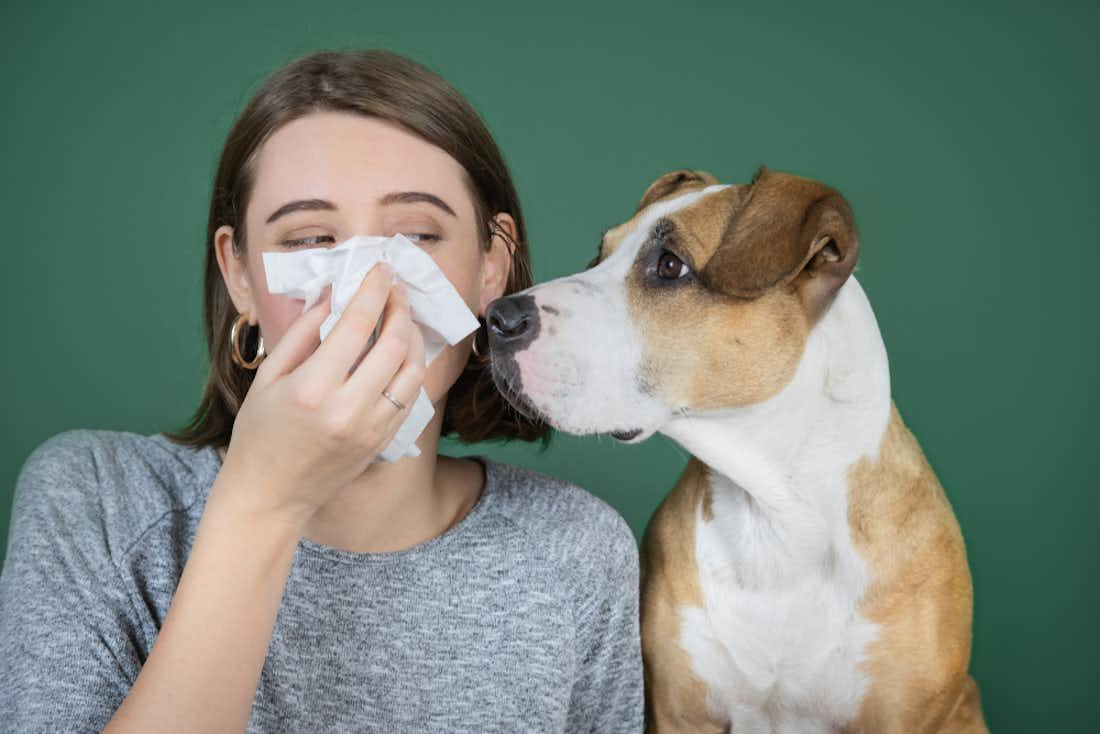Sep 1, 2021
Cold vs. Allergies: How To Tell the Difference
4 minute read
Dealing with allergies can be tough – and we should know. We specialize in dealing with stubborn cases of seasonal allergies and helping sufferers find relief from their symptoms while strengthening their immune systems. We’ve seen hundreds of cases of seasonal allergies, and everyone who suffers from them is equally desperate for relief.
However, we’ve also noticed that it can sometimes be tricky for allergy sufferers to figure out what the cause of their symptoms really is. Could something besides pet dander, mold, chemicals, pollen, dust mites, and other allergens be causing the problem? What if it’s a cold or some other viruses?
Given the similarities between cold and allergy symptoms, it makes perfect sense to wonder whether you’re sick when your allergies flare up. After all, sore throat, stuffy nose, watery eyes, and headaches are symptoms of common cold and allergies.
Since it can be tough to determine whether you’re dealing with allergies or a cold, we took on the task of providing you with a handy guide to help you tell the difference. This post is all about spotting a cold if you have seasonal allergies, as well as how to tell if you’re dealing with allergies and think you’re sick.
Allergies vs. Colds: Key Differences
While it can be challenging for anyone – even professionals – to make an accurate diagnosis on sight, there are often telltale signs that a person is suffering from allergies. For example, allergy symptoms are typical:
- Chronic. Allergies often flare up during certain parts of the year and linger for months. They can also flare up with exposure to your allergy trigger.
Your allergy symptoms might be so stubborn that they never seem to go away all year round (or they could be seasonal, in the winter months or summer months). On the other hand, the cold tends to only last for a few days, maybe a week.
- Intermittent. Allergy symptoms tend to get worse in environments where high concentrations of allergens are present.
For example, if you’re allergic to ragweed, you may experience the worst symptoms when you are outdoors in the fall. This is because ragweed pollen scatters on the wind, blowing to and fro and getting in your nose, causing irritation.
On the other hand, cold symptoms tend to be persistent and present throughout your time being sick. You may find that symptoms momentarily subside when you get enough rest and hydration, take pain relievers, and take cold medication or other medicine. Still, the symptoms of a cold usually hang around until you start getting better.
- Traceable. After taking an allergy test, you should see a connection between specific environments and your allergy symptoms getting worse. For example, an allergy test can tell you why you tend to get itchy eyes and a runny nose in your basement – it’s moldy!
A cold, in contrast, is passed virally from person to person. That means certain circumstances won’t trigger your symptoms – instead, you’ll pick up a cold from another sick person and then start experiencing symptoms. That's why prevention is so important during the flu season.
Common Allergy Symptoms That You Might Get With a Cold
There are plenty of symptoms that you may experience with both seasonal allergies and the common cold. These symptoms include the following:
- A runny nose, nasal discharge, or nasal congestion
- A cough
- Sneezing
- Shortness of breath
- Low energy
- Stuffiness/trouble breathing through your nose
While these symptoms are linked with both colds and allergies, they all look different depending on their cause. For example:
- A persistent cough is typically a sign that you’re dealing with a cold, not allergies. While allergies can make you cough, it’s usually a more intermittent symptom than a near-constant one.
If you find yourself coughing a lot, your respiratory system might have an infection – so get some rest, drink plenty of fluids, and take some decongestants while your immune system fights this thing off.
It’s nasty, but one of the best ways to determine whether you’re sick or having allergy symptoms is to check the color of your mucus when you sneeze or blow your nose.
When you’re dealing with allergies, your mucus will typically be clear. However, when you’re sick, your mucus is more likely to be discolored. Ugh. It’s gross, no doubt, but inspecting your tissues is a surefire way to determine whether you’re sick. Over-the-counter nasal spray or nasal steroid sprays can help with mucus problems.
One Symptom You Won’t Get From Allergies
Want to know one of the best ways to determine whether you’re sick or just having allergy symptoms? Check your temperature.
Running a fever is a telltale sign that you’re sick with a cold, the flu, or something else. However, you won’t get a temperature from seasonal allergies. That means that if you have a fever, you’re dealing with a bug or infection rather than allergy symptoms, and allergy medications won't be able to help you. Cold medicines and things like ibuprofen and acetaminophen can help for the duration of symptoms.
If you have a high temperature, it’s always a good idea to rest up and avoid contact with others as much as possible – a fever usually means you can spread what you’ve caught to other people. Don't be the person who shakes hands with others when you're sick! In addition, if your fever persists or gets higher, make sure to visit your doctor.
Is It Allergies or COVID-19?
The global pandemic has been tough for everyone, and allergy sufferers have had to deal with their own unique set of struggles. COVID-19 has made many people with allergies feel the need to hide their pollen-induced sneezes and coughs in an effort not to scare anyone. Dealing with allergy symptoms in the age of COVID can be scary, too – it’s easy to wonder whether your runny nose is a sign that you have the virus, not just a symptom of your seasonal allergies.
While there is some overlap between the symptoms of COVID and seasonal allergies, there are several key ways to differentiate between the two. You can also check the Center for Disease Control (the CDC) for more information as well.
Get tested. The best way to determine whether you are infected with COVID-19 is to get a test. Tests are available for free in many areas, and results can come back in as little as a few hours. Get that test!
Check your temperature. As you’ve learned, a fever isn’t an allergy symptom. It’s also not necessarily a normal symptom of the common cold. If you’re running a temperature, make sure to get a COVID test.
Pay attention to symptoms like aches and pains. Body aches, fatigue, and loss of taste and smell are all symptoms that indicate COVID. However, these symptoms are not typically caused by allergies.
Conclusion
While it can be tough to figure out what’s causing your runny nose, sneezes, and other symptoms, Cleared is here to help you out. To learn more about how we can help you tackle your allergy symptoms, click here.
Reviewed by Dr. Payel Gupta
Sources:
Common Cold | Antibiotic Use | CDC Cold or allergy: Which is it? | Mayo Clinic COVID-19, cold, allergies and the flu: What are the differences? | Mayo Clinic



